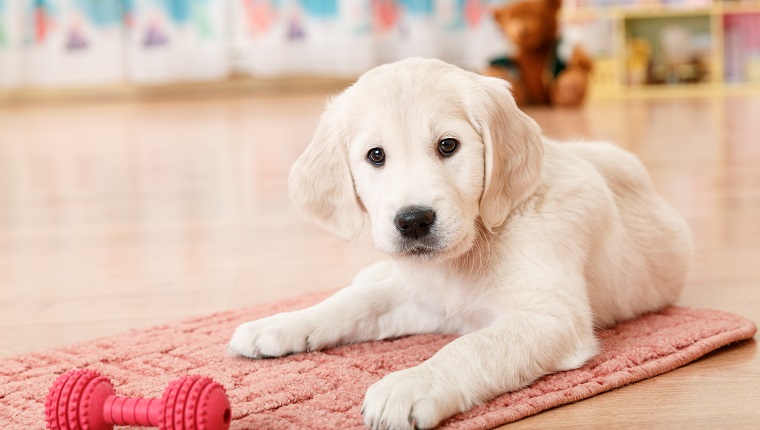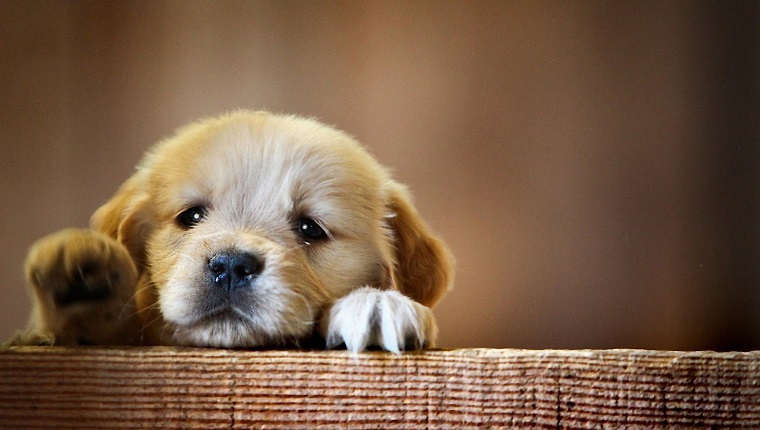I am convinced that sweet puppy breath is nature’s form of Love Potion No. 9. Once exposed, you become intoxicated and powerless to do anything but reschedule your life so that you can spend as much time with your new puppy as possible.
Days pass and you feel your mood and spirit lighten as you witness them romping about in their inquisitive, enthusiastic, and not yet fully coordinated manner.
These brief bursts of entertaining energy balance with hours spent watching the peaceful, deep slumber that is unique to a baby animal. Your hazy, love fog begins to clear when you realize you must head to work, school, or the grocery store.
But, the thought of leaving your new little puppy at home by themselves can be enough to send even the most rational pet parent into guilt overload. This is exacerbated once you head out the door and hear the whimpers, whines, howls and barks of a pup that suddenly realizes they have been left alone.
What ensues is nothing less than mutual canine and human separation anxiety.
Being Alone Is ‘Ruff’
Puppies are programmed to seek out social connections for safety and comfort. Spending time alone is something that is inherently foreign to them and that they are unlikely to have experienced in early puppyhood while they were with their mother and littermates.
However, as spending time alone will be a consistent requirement for almost all pet dogs. Helping a young pup to develop the skill to self pacify and spend time calmly and quietly without their family nearby is a vital part of early puppy education.
Doing so will take the stress out of separation for you and your dog. However, be mindful that helping your puppy learn this skill should be balanced with a well-planned and implemented socialization program so that they also learn to enjoy the company of a wide range of people.
In most ways, the dog’s preference for sociability works in our favor. After all, they have been our devoted companions for years and will work by our side, alert us to intruders, and otherwise be all one could hope for in an animal companion.
However, this propensity for sociability also means that we must allow for a gradual adjustment to learning to spend time alone.
Furthermore, each dog is an individual and deserves to be provided with all that it takes for them to learn in as stress free a manner as possible that is appropriate for their particular temperament and experience.
So, be sure to proceed with the following tips at a rate that is appropriate for your pup.
Use Nap Time To Your Advantage

Make the most of your pup’s need for plenty of rest. As wonderful as it is to cuddle with your sleeping pup, try to use vital nap times as opportunities for your dog to be separate from you when it is likely easiest for them.
Resting in a suitably sized crate is usually the best option as it not only provides a safe resting spot, but when used properly, it will also be a useful housetraining tool.
Start by placing your pup in their crate just after elimination in an appropriate spot and at times when they seem most in need of a nap.
The crate should be near you or other family members. But, over the course of a couple of weeks you should be able to gradually move it farther away.
When your pup wakes up, be sure to carry them immediately to their potty spot.
Toys Can Keep Them Occupied
Use puzzle and chew toys to keep your puppy happily occupied when not engaged in play with you. Dogs, especially puppies who are teething, love to chew. Have a selection of five to ten chew toys on hand for your pup to play with.
Toys that are hollow in the middle and dispense your pup’s food or treats, like KONGs, can keep your dog busy while you walk out the door.
Chew toys that are digestible, such as Bully Sticks, can be a good option too, but you may need to limit how much your dog consumes or take the chews away when they get worn down.
Providing your dog with these engaging chew options will keep them happily occupied when you aren’t engaged with them.
Practice With A Leash

Use a six-foot leash to tie your dog to a stable object nearby and offer two chew toys to keep them busy. Start with your dog no more than a foot or two away, and gradually increase the distance while always keeping your pup in your line of sight.
While they can also see you, this exercise helps prevent your dog from becoming a ‘velcro dog’ and needing to be right near you and follow you about when you are home.
This is a small step that helps make a gradual transition towards your puppy ultimately being able to rest calmly when you aren’t home.
Give Your Puppy Plenty Of Exercise
Provide adequate and appropriate outlets for your puppy’s physical energy.
In addition to adequate potty breaks and walks, active games bode well for your pup’s overall well-being, including receptivity to rest time by themselves.
Try playing fetch and training games that get your pup moving, such as calling the pup back and forth between two or three people for a few minutes and rewarding the dog when they respond.
Practice Makes Perfect

As a general rule, try to spend at least 30 to 50 percent of the time you are home with your pup working on self-pacifying skills.
The amount of time you spend practicing depends on your dog’s temperament and need for time alone experience. But keep repeating their training throughout puppyhood until they can comfortably relax when you’re not within their sight.
These tips will help you achieve your long-term goal of helping your puppy grow into an adult dog with the requisite skills to be able to hang out freely in your home whether you are there or not. But, your baby dog needs your guidance and help to get to this point.
So, as difficult as it can be to separate yourself from your puppy, consider that it is in their best long-term interest. Failure to help your puppy learn to spend time alone is at the root of difficult-to-resolve adult dog separation issues that can be highly stressful for the dog and their family.
On the other hand, setting a foundation in your puppy for spending time alone will result in an adult dog who is joyful when you are there and calm and peaceful when you aren’t.
Have you ever trained a puppy to stay calm while you walk out the door? What training tips did you find helpful? Let us know in the comments below!
Andrea Arden is an animal behavior counselor, rescuer, author, speaker, and a resident pet expert on the Today Show. For more information, check out her website, AndreaArden.com.









